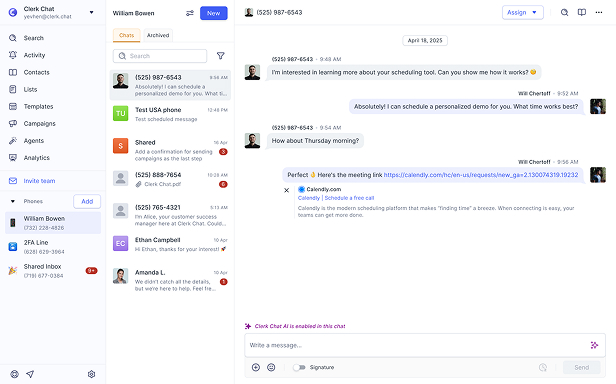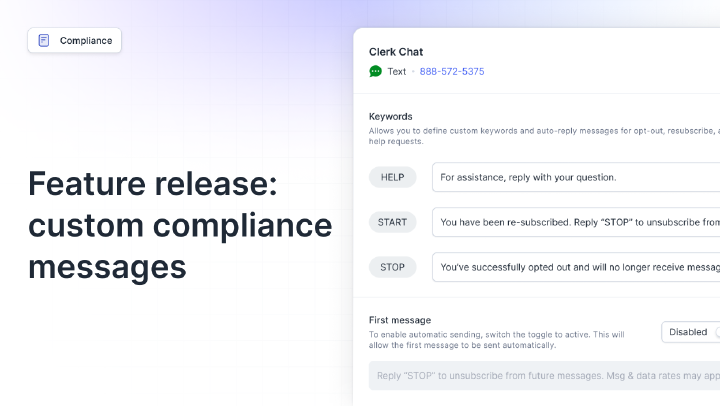Carrier Filtering
[ˈkæriər ˈfɪltərɪŋ]Carrier filtering is the automated process mobile network operators use to analyze and block messages deemed spam, fraudulent, or non-compliant before they reach recipients’ phones.
Why Carrier Filtering Matters
Carrier filtering serves as the frontline defense protecting mobile subscribers from the billions of spam messages sent daily. For businesses, understanding carrier filtering means the difference between successful customer communication and silent message failures that damage both revenue and reputation.
Mobile carriers implement increasingly sophisticated filtering algorithms to combat spam, which grew by 58% in 2024 alone. While these systems protect consumers, they create challenges for legitimate businesses whose messages may inadvertently trigger filtering mechanisms. A filtered message isn’t just undelivered - it represents a failed customer interaction, whether that’s an appointment reminder, delivery notification, or authentication code.
The financial impact extends beyond lost message costs. When time-sensitive communications fail silently, businesses face increased support calls, missed appointments, abandoned shopping carts, and deteriorating customer trust. Industries like healthcare and financial services, where message delivery directly impacts operations and compliance, find carrier filtering particularly critical to address.
How Carrier Filtering Works
Carrier filtering operates through multiple layers of analysis that examine every message before delivery. When you send an SMS, it first reaches the originating carrier’s systems, which perform initial compliance checks. The message then routes through interconnected networks, with each carrier applying their own filtering rules.
The filtering process typically follows these steps:
Content Analysis: Carriers scan message text for spam indicators including promotional language, suspicious URLs, repetitive content, and known phishing patterns. Natural language processing identifies context and intent beyond simple keyword matching.
Sender Verification: The system checks if the sending number is properly registered, has valid 10DLC status, and maintains good standing across carrier databases. Unregistered or recently activated numbers face higher scrutiny.
Behavioral Analysis: Algorithms monitor sending patterns including message velocity, recipient list quality, time-of-day distribution, and geographic spread. Sudden spikes or unusual patterns trigger additional filtering.
Reputation Scoring: Each sender accumulates a reputation score based on historical performance, complaint rates, and compliance history. This score influences how strictly other filtering rules apply.
Network Protection: Real-time threat detection systems identify emerging spam campaigns and automatically update filtering rules across the network, sometimes within minutes of detection.
Messages failing any check may be silently discarded, delayed for manual review, or rate-limited to prevent network abuse. Carriers rarely provide feedback about filtered messages, leaving senders unaware their communications never reached intended recipients.
Best Practices with Carrier Filtering
Register your numbers properly - Complete 10DLC registration including brand verification and campaign approval. Unregistered numbers face automatic filtering and potential blocking. Include accurate use cases and sample messages during registration to set appropriate expectations.
Maintain consistent sending patterns - Establish regular messaging volumes and gradually increase sending rates over time. Sudden spikes from 100 to 10,000 messages daily will trigger velocity filters. Plan campaigns with steady ramp-up periods.
Craft compliant message content - Write conversational messages avoiding spam triggers like ALL CAPS, excessive punctuation!!!, or promotional phrases. Include clear business identification and purpose. Test message templates through multiple carriers before large-scale deployment.
Monitor delivery metrics actively - Track delivery rates by carrier, message type, and time period. Watch for sudden drops indicating filtering issues. Set up alerts for delivery rates falling below 95% to catch problems early.
Implement proper opt-in procedures - Document explicit consent from recipients before messaging. Include opt-out instructions in every message. Remove opted-out numbers immediately. Carriers heavily penalize unsolicited messaging.
Diversify your number pool - Use multiple registered numbers for different message types and volumes. This prevents single points of failure and helps identify which content or patterns trigger filtering.
Build sender reputation gradually - Start with small, highly-engaged recipient lists before scaling. Focus on transactional messages with high engagement before adding promotional content. Positive recipient behavior improves reputation scores over time.
Real world examples
- Finance
Reduced filtering rates by 87% through proper sender registration
Read more - Healthcare
Achieved 99.2% delivery rates for appointment reminders using best practices
Read more
Common misconceptions
Legitimate business messages can be filtered if they trigger spam-like patterns or violate carrier guidelines.
Filtered messages typically disappear silently without delivery notifications or error messages.
Each carrier implements unique algorithms and criteria based on their network protection priorities.
Volume alone doesn't cause filtering; content quality, sender reputation, and compliance matter more.
Related terms
In this article:
Ready to use your business number for text messaging?
Thousands of businesses are already experiencing the power of conversational messaging through SMS. Join us. Free trial and paid tiers available.
Get StartedFAQ
Have questions? We've got answers.
Find what you need quickly and clearly with our most frequently asked questions.
Carrier filtering analyzes multiple factors including message content patterns, sending velocity, URL shorteners, excessive capitalization, promotional language, sender reputation scores, and compliance with regulations like 10DLC. Messages containing phrases like 'FREE', 'Click here', or multiple exclamation marks often trigger filters. Additionally, sending identical messages to many recipients rapidly or using unregistered phone numbers increases filtering risk.
Unlike email bounces, carrier filtering often happens silently. Key indicators include sudden drops in delivery rates, customers reporting they never received messages, analytics showing sent but undelivered messages, and engagement rates falling below 2-3%. Monitor your message logs for patterns - if certain carriers show consistently lower delivery rates or specific message types disappear, filtering is likely occurring.
Carrier filtering can significantly impact ROI. Businesses typically pay $0.01-0.03 per message regardless of delivery, meaning filtered messages waste budget. For a company sending 100,000 monthly messages with 15% filtering, that's $150-450 in lost messaging costs alone. The real cost includes missed sales opportunities, poor customer experience, and potential compliance penalties, often totaling thousands monthly for affected businesses.
Carrier filtering operates more aggressively than email spam filters. While emails often land in spam folders for review, filtered SMS messages disappear entirely without notification. Carriers prioritize network protection over delivery rates, using real-time analysis of content, velocity, and sender behavior. Unlike email where reputation can be gradually rebuilt, carrier filtering penalties can be immediate and long-lasting, requiring formal appeals processes.
Carriers employ sophisticated systems including machine learning algorithms analyzing message patterns, keyword detection engines scanning for spam indicators, velocity monitoring tracking sending rates, reputation databases scoring sender history, and real-time behavioral analysis. These systems examine metadata like originating numbers, routing paths, and time patterns. Carriers also share threat intelligence, meaning poor behavior on one network can impact delivery across multiple carriers.
Recovery timelines vary significantly based on severity. Minor filtering from content issues might resolve within 24-48 hours after correcting message templates. Velocity-based filtering typically requires 3-7 days of reduced sending to reset. Serious reputation damage or compliance violations can take 30-90 days to resolve, requiring formal remediation plans, carrier appeals, and demonstrated compliance improvements. Some businesses never fully recover their original delivery rates without changing phone numbers.




